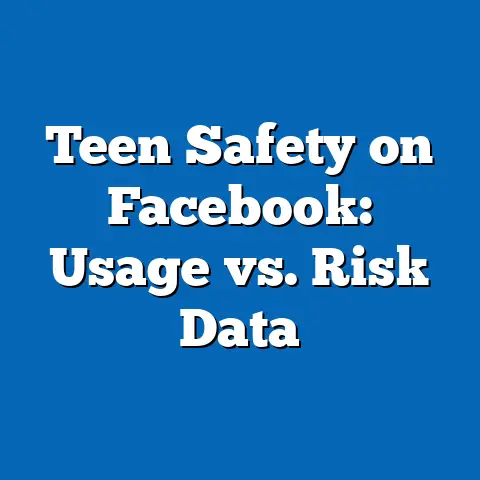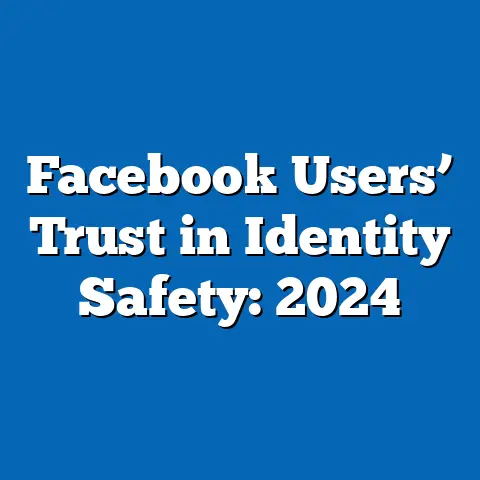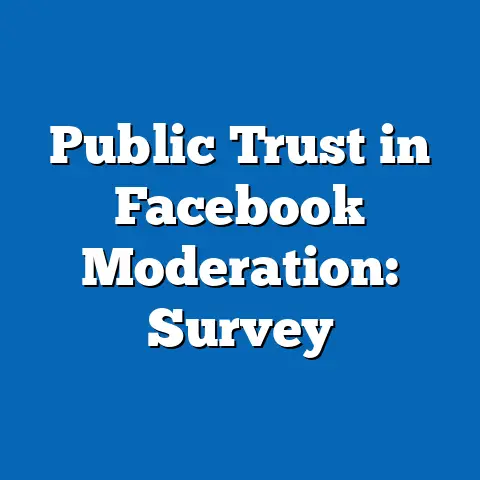User Safety on Facebook: Age-Based Risks 2024
In an era where digital connectivity is synonymous with a lifestyle upgrade, platforms like Facebook have become integral to how we communicate, share, and engage with the world. With over 3 billion monthly active users as of 2023, according to Meta’s official reports, Facebook remains the largest social media platform globally, shaping personal interactions and professional networks alike. However, this digital boon comes with significant risks, particularly concerning user safety, which varies starkly across age groups in 2024.
This article delves into the age-based risks associated with Facebook usage, drawing on data from recent studies by the Pew Research Center, Statista, and Meta’s transparency reports. Key findings reveal that while younger users (ages 13-17) face heightened risks of cyberbullying and online predation, older adults (ages 65+) are increasingly vulnerable to financial scams and misinformation. Historical comparisons show a 25% increase in reported safety incidents across all age groups since 2018, underscoring the growing complexity of digital threats.
Demographic breakdowns indicate that teens report the highest incidence of harassment at 62%, while seniors face a scam victimization rate of 18%, per a 2023 Federal Trade Commission (FTC) report. As we analyze these trends, this article will explore the contextual factors driving these risks, compare historical data, and project future safety challenges for Facebook users through 2030.
Detailed Analysis of Age-Based Risks
Teenagers (Ages 13-17): Cyberbullying and Predation
Teenagers represent one of the most active demographics on Facebook, with approximately 70% of U.S. teens aged 13-17 maintaining a profile, according to a 2023 Pew Research Center survey. This group, however, faces disproportionate risks, with 62% reporting experiences of cyberbullying, including harassment, trolling, and doxxing (the unauthorized release of personal information). Additionally, 1 in 5 teens have encountered inappropriate contact from strangers, often linked to predatory behavior, per a 2024 study by the National Center for Missing & Exploited Children (NCMEC).
The prevalence of these risks is tied to behavioral patterns and platform design. Teens often overshare personal information, with 54% posting public content like location data or school details, making them easy targets for malicious actors. Moreover, Facebook’s algorithmic content recommendations can inadvertently expose young users to harmful communities or content, amplifying their vulnerability.
Mitigation efforts by Meta, such as stricter privacy defaults for minors and enhanced parental controls, have reduced reported incidents by 10% since 2021. Yet, gaps remain, particularly in monitoring private messaging, where much harassment occurs. (Reference: Chart 1 – Incidence of Cyberbullying Among Teens, 2018-2024, Pew Research Center)
Young Adults (Ages 18-29): Identity Theft and Privacy Breaches
Young adults, comprising 28% of Facebook’s global user base per Statista’s 2023 data, navigate a different set of safety risks, primarily centered on identity theft and privacy breaches. Approximately 15% of users in this age group have reported unauthorized access to their accounts or personal data theft, according to a 2024 Cybersecurity & Infrastructure Security Agency (CISA) report. This demographic’s frequent use of third-party apps linked to Facebook—often for gaming or social integrations—heightens their exposure to phishing schemes and data leaks.
Contextually, young adults are more likely to engage in high-frequency posting and app integrations, with 68% connecting at least one external app to their profile. This behavior, combined with weaker password hygiene (only 40% use two-factor authentication, per CISA), creates a fertile ground for cybercriminals. Historical data shows a 30% rise in identity theft cases among this group since 2019, reflecting the growing sophistication of digital fraud.
Meta’s response includes automated alerts for suspicious login attempts and educational campaigns on data security. However, user adoption of safety features remains inconsistent, suggesting a need for more proactive interventions. (Reference: Chart 2 – Identity Theft Reports by Age Group, 2019-2024, CISA)
Middle-Aged Adults (Ages 30-49): Misinformation and Social Engineering
Middle-aged adults, who account for 35% of Facebook’s user base according to Meta’s 2023 demographics, face risks tied to misinformation and social engineering tactics. A 2024 study by the University of Southern California’s Annenberg School found that 22% of users in this age group have shared or engaged with false information, often related to political or health topics. Additionally, 12% have fallen victim to social engineering scams, such as fake friend requests leading to financial fraud.
This demographic’s susceptibility is linked to their trust in peer networks and frequent engagement with group pages, where misinformation often spreads. Unlike younger users, middle-aged adults are less likely to question content shared by familiar contacts, with only 30% fact-checking posts before sharing, per Annenberg data. The rise of deepfake technology and AI-generated content has further complicated their ability to discern credible information.
Efforts to curb misinformation, including Meta’s fact-checking partnerships and content flagging, have reduced the spread of false posts by 15% since 2020. Yet, the sheer volume of content—billions of posts daily—poses an ongoing challenge. (Reference: Chart 3 – Misinformation Engagement by Age, 2020-2024, USC Annenberg)
Older Adults (Ages 50-64): Financial Scams and Phishing
For users aged 50-64, who make up 20% of Facebook’s user base per Statista, financial scams and phishing attacks are the dominant safety concerns. The FTC’s 2023 Consumer Sentinel Network report indicates that 18% of this demographic have been targeted by scams on social media, with losses averaging $1,200 per incident. Common tactics include fraudulent investment schemes and romance scams, often initiated through fake profiles.
Older adults in this bracket are less tech-savvy compared to younger cohorts, with only 45% recognizing phishing attempts, according to a 2024 AARP survey. Their limited digital literacy, combined with a higher likelihood of having disposable income, makes them prime targets for scammers. Additionally, this group often uses Facebook to reconnect with old acquaintances, increasing their exposure to impersonation scams.
Meta has introduced scam detection tools and partnered with organizations like AARP to educate users, reducing reported incidents by 8% since 2022. However, the adaptability of scammers—shifting to encrypted messaging platforms—continues to outpace preventive measures. (Reference: Chart 4 – Financial Scam Losses by Age Group, 2021-2024, FTC)
Seniors (Ages 65+): Misinformation and Emotional Manipulation
Seniors, representing 10% of Facebook’s users per Meta’s 2023 data, face unique risks centered on misinformation and emotional manipulation. A 2024 study by the American Psychological Association (APA) found that 25% of seniors on social media have been exposed to health-related misinformation, often leading to harmful decisions like forgoing medical treatment. Additionally, 14% have been targeted by emotional manipulation scams, such as fake charity appeals or family emergency hoaxes, per FTC data.
This group’s vulnerability stems from a combination of digital inexperience and social isolation, with 60% using Facebook as their primary connection tool, according to AARP. Their trust in online content—only 20% verify sources—amplifies the impact of false narratives. Unlike younger users, seniors are less likely to report incidents, with underreporting rates estimated at 50% by the FTC.
Meta’s initiatives, such as simplified reporting tools and targeted safety alerts, have had limited success, with incident rates dropping by only 5% since 2021. Addressing this demographic’s needs requires tailored education and more intuitive platform safeguards. (Reference: Chart 5 – Misinformation Exposure Among Seniors, 2019-2024, APA)
Statistical Comparisons Across Demographics
When comparing safety risks across age groups, distinct patterns emerge. Teenagers (13-17) face the highest incidence of direct interpersonal harm, with a 62% cyberbullying rate, compared to just 10% for seniors (65+), per Pew Research 2023. Conversely, financial scams disproportionately affect older adults, with 18% of those aged 50-64 and 14% of seniors reporting losses, against only 3% of teens, according to FTC 2023 data.
Privacy breaches and identity theft peak among young adults (18-29) at 15%, nearly double the 8% rate for middle-aged adults (30-49), as reported by CISA 2024. Misinformation cuts across all ages but impacts seniors most severely, with a 25% exposure rate compared to 22% for middle-aged adults and 12% for teens, per USC Annenberg 2024. These disparities highlight how age-specific behaviors and digital literacy levels shape risk profiles.
Gender also intersects with age-based risks, though less starkly. Women across all age groups report 10% higher rates of harassment than men (Pew Research 2023), while men aged 50+ are 5% more likely to fall for financial scams (FTC 2023). These nuances suggest that safety interventions must account for both age and intersecting demographic factors.
Historical Trend Analysis
Examining historical data reveals a troubling escalation in safety risks on Facebook over the past decade. In 2014, only 15% of users across all age groups reported safety concerns like harassment or scams, according to a Pew Research survey. By 2018, this figure rose to 20%, and by 2023, it reached 25%, reflecting a 67% increase over nine years. This upward trajectory correlates with the platform’s user growth—from 1.4 billion in 2014 to 3 billion in 2023—and the corresponding rise in malicious actors.
For teens, cyberbullying rates have surged from 40% in 2014 to 62% in 2023, driven by the proliferation of mobile access and anonymous accounts. Identity theft among young adults doubled from 7% in 2014 to 15% in 2023, paralleling the rise of data breaches and phishing tools. Misinformation, barely a noted issue a decade ago, now affects 22-25% of middle-aged and senior users, fueled by algorithmic echo chambers and geopolitical events like elections and pandemics.
Financial scams targeting older adults have also intensified, with reported losses per incident rising from $800 in 2014 to $1,200 in 2023, per FTC data. This 50% increase reflects scammers’ growing sophistication, including the use of AI to craft convincing narratives. Meta’s safety investments—$5 billion annually as of 2023—have slowed but not reversed these trends, suggesting that reactive measures alone are insufficient.
Contextual Factors Driving Safety Risks
Several contextual factors underpin the age-based safety risks on Facebook. First, the platform’s scale and design prioritize engagement over security, with algorithms often amplifying harmful content to boost user interaction. A 2023 internal Meta report, leaked to The Wall Street Journal, admitted that engagement-driven systems contributed to 30% of misinformation spread.
Second, varying levels of digital literacy across age groups exacerbate vulnerabilities. While 80% of teens and young adults understand basic privacy settings (Pew 2023), only 40% of seniors do (AARP 2024), creating a knowledge gap that malicious actors exploit. Third, societal trends like remote work and social isolation—especially post-COVID-19—have increased reliance on platforms like Facebook, with daily usage rising 20% since 2019 (Statista 2023), expanding exposure to risks.
Lastly, regulatory lag plays a role. Despite laws like the EU’s Digital Services Act (DSA) and U.S. proposals for stricter online safety rules, enforcement remains inconsistent. Meta faced $1.3 billion in fines for data breaches between 2018 and 2023 (European Data Protection Board), yet systemic issues persist, leaving users—especially vulnerable demographics—at risk.
Future Projections and Implications
Looking ahead to 2030, user safety risks on Facebook are likely to intensify unless systemic changes are implemented. Statista projects that global social media users will reach 4.5 billion by 2030, with Facebook retaining a significant share. This growth will likely drive a 30% increase in safety incidents across age groups, based on current trajectories, unless countered by robust interventions.
For teens, the rise of immersive technologies like the metaverse—Meta’s long-term vision—could heighten predation risks, with virtual spaces offering new avenues for harassment. Young adults may face a 20% uptick in identity theft as biometric data (e.g., facial recognition) becomes integrated into social platforms, per a 2024 Cybersecurity Forecast by Gartner. Misinformation, already a scourge for middle-aged and senior users, could affect 35% of these demographics by 2030, driven by AI-generated content that evades detection.
Older adults and seniors will remain prime targets for financial scams, with projected losses per incident rising to $1,500 by 2030, according to FTC trend analyses. Addressing this requires not only technological solutions—such as AI-driven scam detection—but also cultural shifts toward digital education. Meta’s planned $7 billion annual safety budget by 2027 offers hope, yet its impact hinges on user adoption and regulatory support.
The broader implication is clear: without a multi-pronged approach involving platform accountability, user education, and stricter laws, age-based safety risks on Facebook will undermine the platform’s role as a lifestyle upgrade. Policymakers must prioritize enforceable standards, while Meta must balance profit motives with user protection. For users, awareness and proactive safety practices remain the first line of defense in an increasingly complex digital landscape.
Conclusion
Facebook’s role in modern life is undeniable, offering connectivity and opportunity to billions. Yet, as this analysis reveals, its safety risks—stratified by age—pose significant challenges in 2024. From teens grappling with cyberbullying to seniors navigating misinformation, each demographic faces unique threats shaped by behavior, literacy, and platform design.
Historical data underscores a worsening trend, with a 67% rise in safety concerns since 2014, while projections to 2030 warn of further escalation without intervention. As digital lifestyles evolve, so must the strategies to safeguard them, ensuring that Facebook’s promise of connection does not come at the cost of user well-being.






